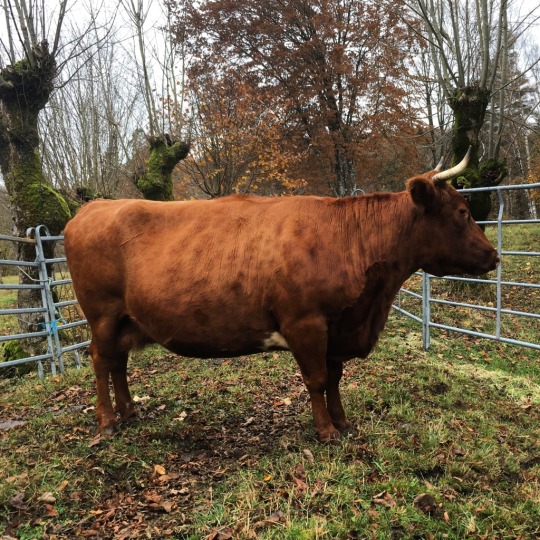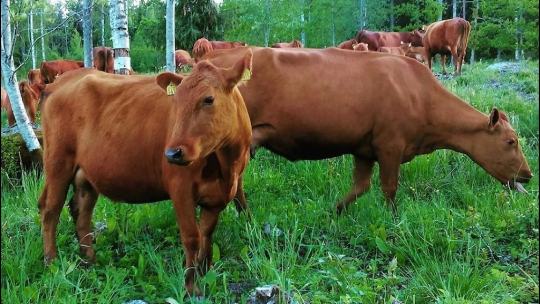#älvabläst
Text
"An old woman was going to wash her clothes on a Sunday morning. She placed her washing pot next to a large rock and set to work. After a while, she needed to change the water; she took the pot and poured the [still quite] hot water out on the ground [close by]. She finished her laundry and started doing [her] other chores, and she didn't notice anything. It became evening, and she went to bed and slept well all night.
But in the morning, as she was getting up, she felt a terrible pain in her face - half of her face was dark blue and covered in blisters. The old woman got very scared, because she realized that she had accidentally scalded a vätte¹ with her hot laundry water. Vättarna² are, as is [commonly] known, little earth spirits that usually appear in the shape of little toads.
They called for a wise old woman³. This woman went from house to house, begging for money - one and a half styver⁴ was called "halvannan peng⁵" - and she should get nine of those.
It wouldn't be acceptable for her to receive the money by any other means than begging. When she had collected the money, she sent the sick old woman out to acquire milk from a cow that was completely red.
Now when the milk had been collected, an offering was made to the king⁶ of vättarna. A hole was dug next to the rock where the woman had done her laundry, and the money and milk was thrown into [the hole]. Then the sick [old woman] had to remain indoors for nine days, and she wasn't allowed to show her face to anyone [that was human].
After nine days, the sick [old woman] was feeling a lot better, and after she had bought lampante olive oil for twelve shillings⁷ and used it to moisturize her face, she soon made a full recovery."
- sägen from Tving, Blekinge, as told by Ebbe Schön in Svenska sägner
¹ land wight
² land wights
³ one of the kloka; a practitioner of traditional folk medicine
⁴ a coin of low value
⁵ lit. "one and a half coin"
⁶ Ebbe Schön notes that the king might have been added to the sägen by the person recording it, but that the description of the offering is consistent with how traditional folk medicine was practiced. He writes "The curing [ritual] is, like so often within folk medicine, complicated - [because] this will make it more potent. The number nine, that is three times the magical number three, seems to be of vital importance in this ritual. "
⁷ Swedish shillings, skilling
Bonus: pictures of (some of) the traditional cow breeds that originate from Blekinge/southern Sweden:

Ringamålako (Ringamåla cow)

Granemålako (Granemåla cow)

Rödkulla (red polled cow)
#offerings#älvabläst#vättar#land wights#tving#blekinge#cows#money#kloka#olive oil#scandinavian folklore#folklore#laundry#lantraser#milk#don't scald the little earth spirits#9#nine#numbers#folk medicine
186 notes
·
View notes